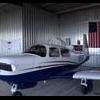Leaning & temps
-
Members Online
- Electro
- carqwik
- Igor_U
- kortopates
- Kenfen
- Michael Arnold
- 231DF
- Aerodon
- PT20J
- dzeleski
- midlifeflyer
- DanM20C
- LANCECASPER
- Scottknoll
- Planegary
- Marc_B
- 67 m20F chump
- Jeff Dennerline
- flyboy0681
- 201Mooniac
- AndreiC
- buddy
- Justin Schmidt
- Parker_Woodruff
- 802flyer
- TangoTango
- MattCW
- BillC
- eman1200
- Falcon Man
- DonMuncy
- chrisburdzy98
- KLRDMD
- TCC


Recommended Posts
Join the conversation
You can post now and register later. If you have an account, sign in now to post with your account.